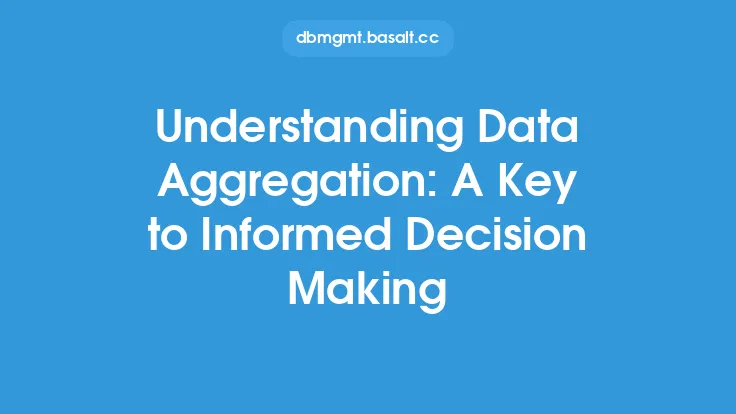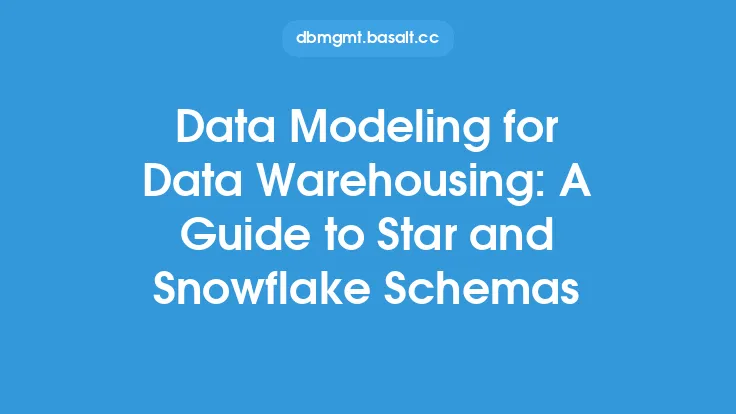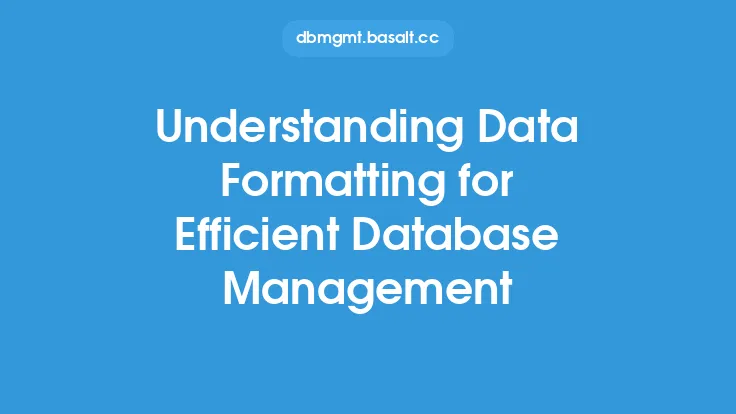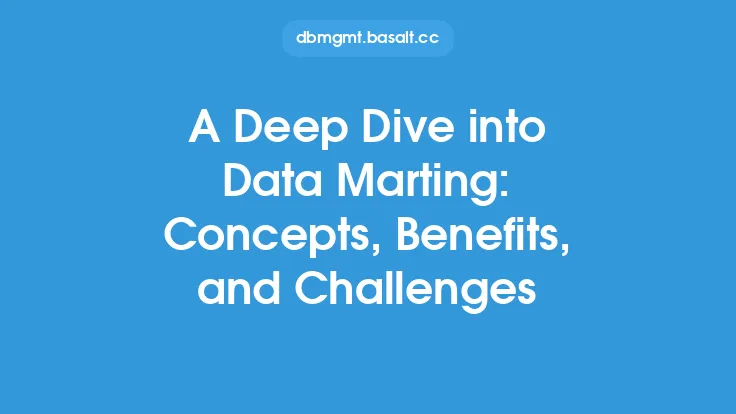Data marting is a crucial aspect of data denormalization, which involves the process of organizing and structuring data in a way that facilitates efficient analysis and retrieval. At its core, data marting refers to the creation of a subset of data that is specifically designed to support business decision-making and analysis. This subset of data is typically extracted from a larger data warehouse or database and is optimized for querying and analysis.
Introduction to Data Marting Concepts
Data marting concepts are rooted in the idea of providing a simplified and focused view of complex data. By creating a data mart, organizations can provide users with a more manageable and accessible dataset that is tailored to their specific needs. Data marts can be designed to support a wide range of business functions, from sales and marketing to finance and operations. The key to successful data marting is to identify the most relevant and useful data and to present it in a way that is easy to understand and analyze.
Benefits of Data Marting
The benefits of data marting are numerous and well-documented. By creating a data mart, organizations can improve the performance and efficiency of their data analysis and reporting capabilities. Data marts can also help to reduce the complexity and cost of data analysis, as users are no longer required to navigate large and complex datasets. Additionally, data marts can provide a more secure and controlled environment for data analysis, as access to sensitive data can be restricted and managed. Perhaps most importantly, data marts can help organizations to make better-informed decisions, as users are provided with timely and accurate insights into business performance and trends.
Data Marting Architecture
The architecture of a data mart is typically designed to support high-performance querying and analysis. This is achieved through the use of specialized database designs and indexing techniques, which enable fast and efficient data retrieval. Data marts are often built using a star or snowflake schema, which provides a simplified and denormalized view of the data. This schema design helps to reduce the complexity of the data and improves query performance, as the number of joins required to retrieve data is minimized. In addition to the schema design, data marts often employ advanced indexing techniques, such as bitmap indexing, to further improve query performance.
Data Marting Tools and Technologies
A wide range of tools and technologies are available to support data marting, from data integration and ETL (extract, transform, load) tools to data warehousing and business intelligence platforms. These tools provide organizations with the ability to design, build, and manage data marts, as well as to perform advanced data analysis and reporting. Some of the most popular data marting tools and technologies include data warehousing platforms, such as Amazon Redshift and Google BigQuery, and business intelligence platforms, such as Tableau and Power BI. Additionally, data integration and ETL tools, such as Informatica and Talend, provide organizations with the ability to extract, transform, and load data into their data marts.
Data Marting and Data Governance
Data marting is closely tied to data governance, as the creation and management of data marts require careful planning and oversight. Data governance refers to the policies, procedures, and standards that are used to manage and protect an organization's data assets. In the context of data marting, data governance is critical, as it helps to ensure that data is accurate, complete, and secure. This is achieved through the establishment of data quality standards, data security protocols, and data access controls. By implementing robust data governance practices, organizations can ensure that their data marts are reliable, trustworthy, and compliant with regulatory requirements.
Data Marting and Data Denormalization
Data marting is a key aspect of data denormalization, which involves the process of transforming normalized data into a denormalized form. Normalized data is typically stored in a relational database management system (RDBMS) and is optimized for data storage and integrity. However, normalized data can be slow to query and analyze, as it requires multiple joins to retrieve related data. Denormalized data, on the other hand, is optimized for querying and analysis, as related data is stored together in a single table or structure. Data marting is a form of data denormalization, as it involves the creation of a denormalized view of the data that is optimized for querying and analysis.
Conclusion
In conclusion, data marting is a powerful technique for improving the efficiency and effectiveness of data analysis and reporting. By creating a subset of data that is specifically designed to support business decision-making and analysis, organizations can improve the performance and efficiency of their data analysis and reporting capabilities. The benefits of data marting are numerous, from improved query performance and reduced complexity to better-informed decision-making and improved data governance. As organizations continue to grapple with the challenges of big data and business intelligence, data marting is likely to play an increasingly important role in helping them to unlock the value of their data assets.





